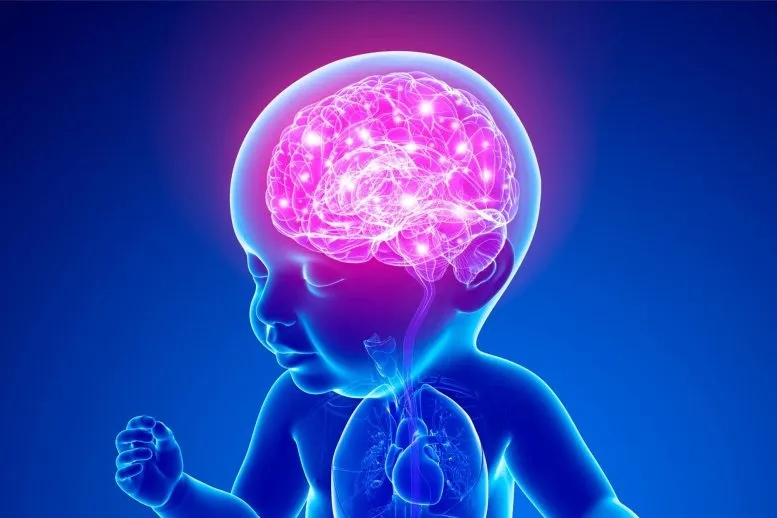博文
科学家们发现了一种新的可怕的遗传病
 精选
精选
||
科学家们发现了一种新的可怕的遗传病
诸平

据英国朴茨茅斯大学(University of Portsmouth)2022年7月24日提供的消息,科学家们发现了一种新的可怕的遗传病(Scientists Discover a New Horrifying Genetic Disease),它会导致一些儿童的大脑异常生长并延缓智力发育。这种罕见的遗传病被发现是由蛋白质编码基因谷氨酸离子型受体AMPA型亚基1的变异引起的。这种疾病还很新,以至于还没有名字,大多数患有这种疾病的人都在努力应对对他们的生活质量产生负面影响的重大学习挑战。
来自朴茨茅斯大学、英国南安普敦大学(University Of Southampton)和丹麦哥本哈根大学(University Of Copenhagen)以及比利时、加拿大的一个国际研究小组表示,被称为谷氨酸离子型受体AMPA亚基1 (Glutamate Ionotropic Receptor AMPA Type Subunit 1简称GRIA1) 的蛋白质编码基因的变化是这种罕见遗传疾病的根本原因。
该变体的发现将帮助医生开发有针对性的治疗方法,以帮助患者及其家人,并将为筛查和产前诊断铺平道路。GRIA1基因促进脑内电脉冲的运动。如果这个过程受到干扰或效率降低,大脑记忆信息的能力可能会受到阻碍。
为了证明GRIA1突变是导致行为改变疾病的根本原因,由青蛙遗传学家、生物化学家和临床遗传学家组成的研究小组使用了蝌蚪进行研究,其中人类基因变异通过基因编辑进行复制。变异体的生化分析也在青蛙卵母细胞中进行,相关研究结果于2022年7月7日已经在《美国人类遗传学杂志》(The American Journal of Human Genetics)发表——Vardha Ismail, Linda G. Zachariassen, Annie Godwin, Mane Sahakian, Sian Ellard, Karen L. Stals, Emma Baple, Kate Tatton Brown, Nicola Foulds, Gabrielle Wheway, Matthew O. Parker, Signe M. Lyngby, Miriam G. Pedersen, Julie Desir, Allan Bayat, Maria Musgaard, Matthew Guille, Anders S. Kristensen, Diana Baralle. Identification and functional evaluation of GRIA1 missense and truncation variants in individuals with ID: An emerging neurodevelopmental syndrome. The American Journal of Human Genetics, 2022, 109(7): 1217-1241. DOI: 10.1016/j.ajhg.2022.05.009. Published 7 July 2022. https://doi.org/10.1016/j.ajhg.2022.05.009
参与此项研究的有来自英国南安普顿大学医院NHS信托基金(University Hospital Southampton NHS Foundation Trust, Southampton SO165YA, UK)、英国朴茨茅斯欧洲爪蟾资源中心(European Xenopus Resource Centre, School of Biological Sciences, King Henry Building, King Henry I Street, Portsmouth PO1 2DY, UK)、英国埃克塞特基因组学实验室(Exeter Genomics Laboratory, Royal Devon & Exeter NHS Foundation Trust, Barrack Road, Exeter EX2 5DW, UK)英国埃克塞特大学医学院(University of Exeter Medical School, Royal Devon & Exeter NHS Foundation Trust, Barrack Road, Exeter EX2 5DW, UK)、英国伦敦圣乔治大学(St George's University of London, Cranmer Terrace, London SW17 0RE, UK)、英国南安普敦大学医学院(Faculty of Medicine, University of Southampton)、英国朴茨茅斯大学(University of Portsmouth, Old St Michael's Building, White Swan Road, Portsmouth PO1 2DT, UK)、英国南安普敦大学(University of Southampton);丹麦哥本哈根大学(University of Copenhagen, Denmark)、南丹麦大学(University of Southern Denmark);比利时病理和遗传学研究所(Institut de Pathologie et de Génétique, Avenue Georges Lemaître, 25 6041 Gosselies, Belgium.)以及加拿大渥太华大学(University of Ottawa, Canada)的研究人员。
该研究的合著者、朴茨茅斯大学表观遗传学和发育生物学研究小组实验室负责人马特·吉耶(Matt Guille)教授说:“下一代DNA测序正在改变我们做出新诊断和发现罕见疾病新遗传原因的能力。为这些患者提供诊断的主要瓶颈是将他们基因组中发现的变化与他们的疾病牢固地联系起来。在蝌蚪中进行可疑的遗传变化,使我们能够测试它是否会在人类中引起同样的疾病。由此产生的数据,使我们能够支持我们的同事提供患者及其家人迫切需要的更及时、更准确的诊断。”
完成了大部分研究的合作者、朴茨茅斯大学的研究员安妮·古德温博士(Dr. Annie Goodwin)说:“这对我们来说是一项变革性的工作;分析蝌蚪类人类行为的能力足以准确地检测与遗传疾病相关的变化,这为帮助识别大量疾病提供了机会。鉴于目前尚未诊断出如此多的神经发育疾病,这一点尤为重要。”
共同作者、南安普顿大学医学院基因组医学教授兼副院长(研究)戴安娜·巴拉勒教授(Professor Diana Baralle,)补充说:“发现这些导致遗传疾病的新原因结束了我们患者的诊断之旅,这已经成为可能跨大学的跨学科合作。”
17 人中就有 1 人会在一生中的某个时候患上罕见病。这些罕见疾病中的大多数都有遗传原因,并且经常影响儿童,但要证明哪种基因变化导致疾病是一个巨大的挑战。
马特·吉耶教授说,以前,虽然将基因和疾病联系起来的研究主要是在老鼠身上进行的;几个实验室,包括他在朴茨茅斯大学的实验室,最近表明,蝌蚪实验也可以为变异人类基因的功能提供非常有力的证据。在蝌蚪中重新创建一些基因变体的过程很简单,可以在短短三天内完成。
马特·吉耶教授补充说:“我们目前正在医学研究委员会资助的项目中扩展和改进我们的技术;这使其适用于我们的临床合作者提供给我们的更广泛的与疾病相关的 DNA 变化。如果临床研究人员发现这些信息足够有用,那么我们将继续共同努力,扩大基因功能分析的管道,以便为大量患者指导有效的干预措施。”
上述介绍,仅供参考。欲了解更多信息,敬请注意浏览原文或者相关报道。
GRIA1 encodes the GluA1 subunit of α-amino-3-hydroxy-5-methyl-4-isoxazole propionate (AMPA) receptors, which are ligand-gated ion channels that act as excitatory receptors for the neurotransmitter L-glutamate (Glu). AMPA receptors (AMPARs) are homo- or heteromeric protein complexes with four subunits, each encoded by different genes, GRIA1 to GRIA4. Although GluA1-containing AMPARs have a crucial role in brain function, the human phenotype associated with deleterious GRIA1 sequence variants has not been established. Subjects with de novo missense and nonsense GRIA1 variants were identified through international collaboration. Detailed phenotypic and genetic assessments of the subjects were carried out and the pathogenicity of the variants was evaluated in vitro to characterize changes in AMPAR function and expression. In addition, two Xenopus gria1 CRISPR-Cas9 F0 models were established to characterize the in vivo consequences. Seven unrelated individuals with rare GRIA1 variants were identified. One individual carried a homozygous nonsense variant (p.Arg377Ter), and six had heterozygous missense variations (p.Arg345Gln, p.Ala636Thr, p.Ile627Thr, and p.Gly745Asp), of which the p.Ala636Thr variant was recurrent in three individuals. The cohort revealed subjects to have a recurrent neurodevelopmental disorder mostly affecting cognition and speech. Functional evaluation of major GluA1-containing AMPAR subtypes carrying the GRIA1 variant mutations showed that three of the four missense variants profoundly perturb receptor function. The homozygous stop-gain variant completely destroys the expression of GluA1-containing AMPARs. The Xenopus gria1 models show transient motor deficits, an intermittent seizure phenotype, and a significant impairment to working memory in mutants. These data support a developmental disorder caused by both heterozygous and homozygous variants in GRIA1 affecting AMPAR function.
https://blog.sciencenet.cn/blog-212210-1348888.html
上一篇:面对日益减少的资源,未来的经济增长在何方?
下一篇:科学家首次捕捉到二维晶体中隐藏的量子相